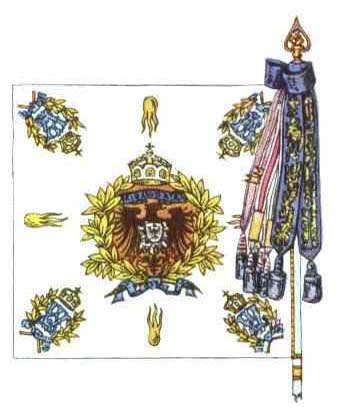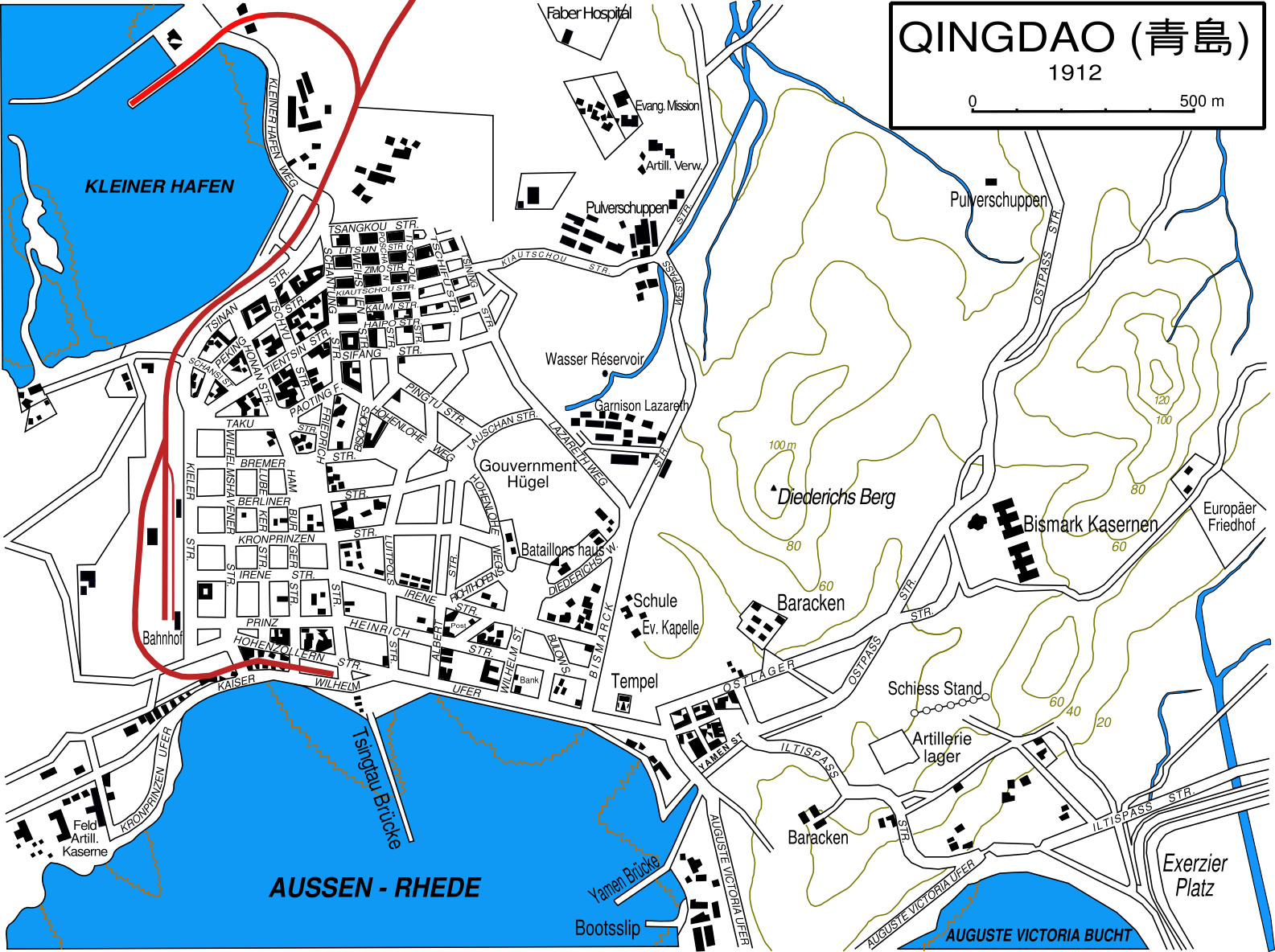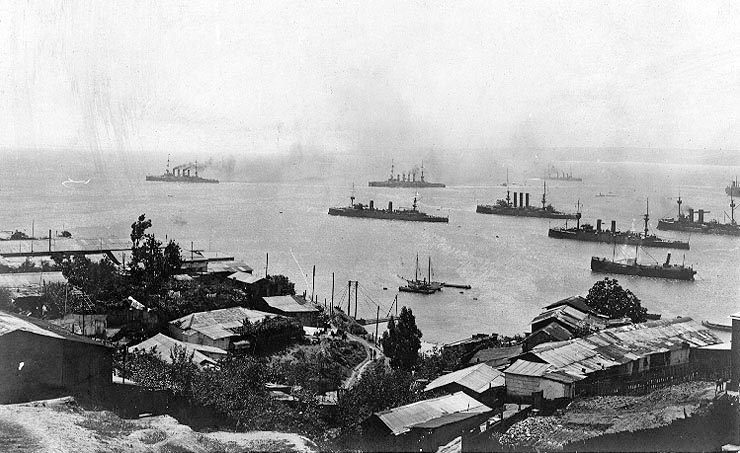|
Seebataillon
''Seebataillon'' (plural ''Seebataillone''), literally "sea battalion", is a German term for certain troops of naval infantry or marines. It was used by the Prussian Navy, the North German Federal Navy, the Imperial German Navy, the Austro-Hungarian Navy, the ''Kriegsmarine'', and briefly in the ''Bundesmarine''. In 2014, also the modern German Navy established a naval force protection unit called ''Seebataillon''. Establishment and history Kingdom of Prussia The first ''Seebataillon'' was organized on 13 May 1852 as the Royal Prussian ''Marinier-Korps'' at Stettin. This formation provided small contingents of marines to perform traditional functions such as protecting officers, general policing aboard warships and limited amphibious shore intrusions. The ''Seebataillon'' in 1870 had a strength of 22 officers and 680 non-commissioned officers and men. Battalion headquarters was then located at Kiel. German Empire After the establishment of the German Empire in 1871, Chan ... [...More Info...] [...Related Items...] OR: [Wikipedia] [Google] [Baidu] |
Naval Force Protection Battalion (Germany)
The Sea Battalion () is a land formation of the German Navy. It was formed in Eckernförde on 1 April 2014, succeeding the Naval Protection Force (Germany), Naval Protection Force and the Naval Force Protection Battalion, against a background of rapidly escalating Russo-Ukrainian War, tensions in Eastern Europe centering around Ukraine. Structure The Sea Battalion is made up of around 1,100 sailors and structured into four companies plus support elements. Every company, led by a lieutenant commander (''Korvettenkapitän'', Ranks and insignia of officers of NATO navies, OF-3), is specialized in specific field of force protection. * Seebataillon ** HQ *** S1 *** S2 *** S3 *** S4 *** S6 *** medical support group ** coastal defence company (''Küsteneinsatzkompanie'') *** 1st platoon *** 2nd platoon *** 3rd platoon *** 4th platoon *** 5th platoon (inactive) ** boarding company (''Bordeinsatzkompanie'') *** 1st platoon *** 2nd platoon *** 3rd platoon *** 4th platoon ** Minentauche ... [...More Info...] [...Related Items...] OR: [Wikipedia] [Google] [Baidu] |
Marines (military)
Marines (or naval infantry) are military personnel generally trained to operate on both land and sea, with a particular focus on amphibious warfare. Historically, the main tasks undertaken by marines have included Raid (military), raiding ashore (often in support of naval objectives) and the Boarding (attack), boarding of vessels during naval warfare, ship-to-ship combat or capture of Prize (law), prize ships. Marines also assisted in maintaining security, discipline, and order aboard ships (reflecting the historically Impressment, pressed-nature of the rest of the ship's company and the risk of mutiny). While maintaining many of their historical roles, in modern times, marines also engage in duties including Rapid reaction force, rapid-response operations, humanitarian aid, disaster relief, special forces, special operations roles, and counter-terrorism, counter-terrorism operations. In most nations, marines are an integral part of that state's navy, such as the United Kingdom's ... [...More Info...] [...Related Items...] OR: [Wikipedia] [Google] [Baidu] |
Paul Emil Von Lettow-Vorbeck
Paul Emil von Lettow-Vorbeck (20 March 1870 – 9 March 1964), popularly known as the Lion of Africa (), was a general in the Imperial German Army and the commander of its forces in the German East Africa campaign. For four years, with a force of about 14,000 (3,000 Germans and 11,000 Africans), he held in check a much larger force of 300,000 British, Indian, Belgian, and Portuguese troops. He is known for never being defeated or captured in battle. Lettow-Vorbeck was the only German commander to successfully invade a part of the British Empire during the First World War. His exploits in the campaign have been described by historian Edwin Palmer Hoyt as "the greatest single guerrilla operation in history, and the most successful". Early life Paul Emil von Lettow-Vorbeck was son of Paul von Lettow-Vorbeck (1832–1919) and Marie von Eisenhart-Rothe (1842–1919). He was born into the Pomeranian minor nobility, while his father was stationed as an army officer at Saarlouis ... [...More Info...] [...Related Items...] OR: [Wikipedia] [Google] [Baidu] |
Imperial German Navy
The Imperial German Navy or the ''Kaiserliche Marine'' (Imperial Navy) was the navy of the German Empire, which existed between 1871 and 1919. It grew out of the small Prussian Navy (from 1867 the North German Federal Navy), which was mainly for coast defence. Wilhelm II, Kaiser Wilhelm II greatly expanded the navy. The key leader was Admiral Alfred von Tirpitz, who greatly expanded the size and quality of the navy, while adopting the Command of the sea, sea power theories of American strategist Alfred Thayer Mahan. The result was a Anglo-German naval arms race, naval arms race with Britain, as the German navy grew to become one of the greatest maritime forces in the world, second only to the Royal Navy. The German surface navy proved ineffective during the First World War; its only major engagement, the Battle of Jutland, was a draw, but it kept the surface fleet largely in port for the rest of the war. The submarine fleet was greatly expanded and threatened the British supply s ... [...More Info...] [...Related Items...] OR: [Wikipedia] [Google] [Baidu] |
Qingdao
Qingdao, Mandarin: , (Qingdao Mandarin: t͡ɕʰiŋ˧˩ tɒ˥) is a prefecture-level city in the eastern Shandong Province of China. Located on China's Yellow Sea coast, Qingdao was long an important fortress. In 1897, the city was ceded to Germany. For the Germans Qingdao (Tsingtau) was a strategic trade center, port and base for its East Asia Squadron, allowing the German navy to project dominance in the Pacific. In 1914, following the outbreak of World War I, Japan occupied the city and the surrounding province during the Siege of Tsingtao. In 1915, China agreed to recognize Japan's special position in the territory through what became known as the Twenty-One Demands. In 1918, the Chinese government, under the control of the warlord Duan Qirui, secretly agreed to Japanese terms in exchange for a loan. Following the First World War, during the Paris Peace Conference, Japan secured agreements with the Allied powers to recognize its claim to the areas in Shandong, which in ... [...More Info...] [...Related Items...] OR: [Wikipedia] [Google] [Baidu] |
Jiaozhou Bay Leased Territory
The Kiautschou Bay Leased Territory was a German leased territory in Imperial and Early Republican China from 1898 to 1914. Covering an area of , it centered on Kiautschou Bay (Jiaozhou Bay) on the southern coast of the Shandong Peninsula. The administrative center was at Tsingtau (Qingdao). It was operated by the East Asia Squadron of the Imperial German Navy. The Russian Empire resented the German move as an infringement on Russian ambitions in the region. Background of German expansion in China Germany was a relative latecomer to the imperialistic scramble for colonies across the globe. A German colony in China was envisioned as a two-fold enterprise: as a coaling station to support a global naval presence, and because it was felt that a German colonial empire would support the economy in the mother country. Densely populated China was viewed as a potential market to be exploited, with thinkers such as Max Weber demanding an active colonial policy from the government. In p ... [...More Info...] [...Related Items...] OR: [Wikipedia] [Google] [Baidu] |
Kriegsmarine
The (, ) was the navy of Nazi Germany from 1935 to 1945. It superseded the Imperial German Navy of the German Empire (1871–1918) and the inter-war (1919–1935) of the Weimar Republic. The was one of three official military branch, branches, along with the and the , of the , the German armed forces from 1935 to 1945. In violation of the Treaty of Versailles, the grew rapidly during German rearmament, German naval rearmament in the 1930s. The 1919 treaty had limited the size of the German navy and prohibited the building of submarines. ships were deployed to the waters around Spain during the Spanish Civil War (1936–1939) under the guise of enforcing non-intervention in the Spanish Civil War, non-intervention, but in reality supporting the Francoist Spain, Nationalists against the Second Spanish Republic, Spanish Republicans. In January 1939, Plan Z, a massive shipbuilding programme, was ordered, calling for surface naval parity with the United Kingdom, British Royal ... [...More Info...] [...Related Items...] OR: [Wikipedia] [Google] [Baidu] |
Bundesmarine
The German Navy (, ) is part of the unified (Federal Defense), the German Armed Forces. The German Navy was originally known as the ''Bundesmarine'' (Federal Navy) from 1956 to 1995, when ''Deutsche Marine'' (German Navy) became the official name with respect to the 1990 incorporation of the East German ''Volksmarine'' (People's Navy). It is deeply integrated into the NATO alliance. Its primary mission is protection of Germany's territorial waters and maritime infrastructure as well as sea lines of communication. Apart from this, the German Navy participates in peacekeeping operations, and renders humanitarian assistance and disaster relief. It also participates in anti-piracy operations. History German Naval history has its roots in the naval history of the Holy Roman Empire, to which the Naval history of the Netherlands, Dutch Navy and even the Spanish Navy once belonged. Proper German language early maritime history is represented by the Hanseatic League and the Brandenbu ... [...More Info...] [...Related Items...] OR: [Wikipedia] [Google] [Baidu] |
East Asia Squadron
The German East Asia Squadron () was an Imperial German Navy cruiser squadron which operated mainly in the Pacific Ocean between the mid-1890s until 1914, when it was destroyed at the Battle of the Falkland Islands. It was based at Germany's Jiaozhou Bay Leased Territory in China. Background The Treaty of Peking of September 1861 between the Kingdom of Prussia and China allowed Prussian warships to operate in Chinese waters. As East Asia grew in economic and political importance to the recently united Germany, in 1881, a flying squadron was formed for the area under the command of a flag officer. Since African colonies were then seen as of greater value, an African Cruiser Squadron was established in 1885 with permanent status, and shortly thereafter the Imperial German Navy reduced the East Asia presence to two small gunboats. From 1888 to 1892, was flagship of the German East Asia Squadron, initially under Vice Admiral Karl August Deinhardt, appointed 14 July when the ship w ... [...More Info...] [...Related Items...] OR: [Wikipedia] [Google] [Baidu] |
German Empire
The German Empire (),; ; World Book, Inc. ''The World Book dictionary, Volume 1''. World Book, Inc., 2003. p. 572. States that Deutsches Reich translates as "German Realm" and was a former official name of Germany. also referred to as Imperial Germany, the Second Reich or simply Germany, was the period of the German Reich; . from the unification of Germany in 1871 until the German revolution of 1918–1919, November Revolution in 1918, when the German Reich changed its form of government from a monarchy to a Weimar Republic, republic. The German Empire consisted of States of the German Empire, 25 states, each with its own nobility: four constituent Monarchy, kingdoms, six Grand duchy, grand duchies, five Duchy, duchies (six before 1876), seven Principality, principalities, three Free imperial city, free Hanseatic League, Hanseatic City-state, cities, and Alsace–Lorraine, one imperial territory. While Prussia was one of four kingdoms in the realm, it contained about two-thirds ... [...More Info...] [...Related Items...] OR: [Wikipedia] [Google] [Baidu] |







